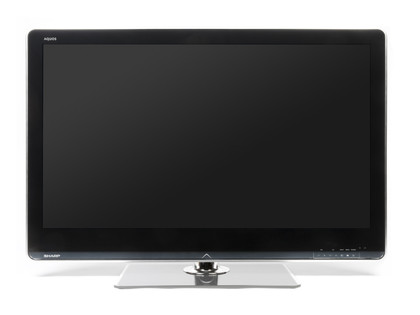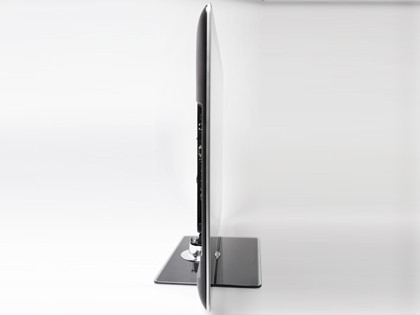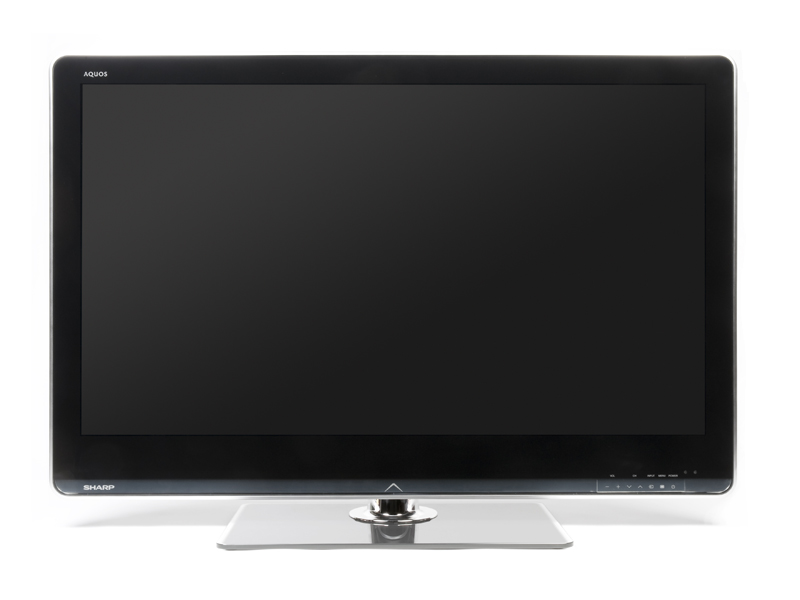Why you can trust TechRadar

We need to start this section, of course, by finally revealing what exactly this Quad Pixel stuff is all about.
At heart, it's startlingly simple: Sharp has 'merely' added a fourth core colour component - yellow - to the usual RGB sub-pixels that make up a typical LCD TV picture.
While this sounds simple on paper, though, it's actually taken Sharp around four years of development to get right. Which probably explains why no other brands have done it before.
The biggest challenge Sharp has faced in trying to add a fourth sub-pixel has been the need to reduce the size of each sub-pixel in the LCD picture by a full quarter, so that full HD resolutions can be retained in all the screen sizes (starting at 40 inches) the new Quattron range covers.
The Sharp engineers have finally cracked it, though, and are now making some pretty grand claims for what the technology will do for the picture quality of the 46" LC46LE821E we're looking at today.
For a start, Sharp reckons pictures should look as much as 20 per cent brighter than those of a 'normal' LCD TV, due to the yellow pixel having a greater level of transparency and thus making it easier for the TV's lighting to pass through than the red, green and blue pixels.

A further benefit connected to the yellow sub-pixel's relative transparency concerns power consumption.
If light can be more easily transmitted through a four-colour pixel than it can through a normal RGB one, then you don't need to drive the panel as hard to achieve good levels of brightness.
Probably the most significant performance boost of adding the yellow sub-pixel, though, should come in the area of colour response. Essentially the screen should be able to produce a significantly wider portion of the video colour spectrum (Sharp claims '1000 times more colour'!) than you would get with a typical 3-colour LCD TV.
So while yellow colours should of course look more pure since they're no longer having to be 'mixed' by a combination of the usual red, green and blues, blues, deep and bright greens, aqua marines and gold colours should also look significantly more realistic and dynamic thanks to the addition of yellow to the TV's primary palette. What's more, colour gradations should look smoother and more natural too.
As if all this wasn't already tantalising enough, the extra transparency of the yellow-boosted Quattron pixel structure should allow Sharp's TV to show more shadow detailing during dark scenes than your average RGB LCD TVs.
LED lighting
Now that we've dealt with its yellow sub-pixel, the next thing to strike us about the 46LE821E is how slender it is. Thanks, it turns out, to it being the first TV we've seen from Sharp to use edge LED lighting.
This finds an array of LED lights ranged around the screen's edge firing light across the screen's back which is then refracted through the LCD array and out to the viewer.
There's usually a compromise in picture quality terms from taking this approach, in the form of reduced black level response or brightness. But everyone seems to want slim TVs these days, so it was inevitable that Sharp would go the edge LED route eventually.
As well as being slim, the 46LE821E is also very pretty, thanks to a single-layer finish and rather fancy illuminated triangle symbol below the screen.
Connectivity
The set's connectivity mostly impresses too, with highlights of four HDMIs, a USB port able to play JPEGs and DivX HD files, an RS-232 control jack, and an Ethernet port for accessing files on a DLNA-enabled PC. This is the first time we've seen such network support from Sharp. It's good to find, too, that all the connections are entered from the side, rather than directly from the TV's rear, making the TV easier to wall mount.
It's a pity, perhaps, that there's no built-in Wi-Fi, and that Sharp doesn't offer any sort of online functionality like many of its rivals do now. But the Ethernet port does have one other key job: support for future interactive applications that might launch via the in-built Freeview HD tuner.
Having Freeview HD on a TV, especially a premium TV like the 46LE821E, is looking increasingly essential this year.
Watch and RECORD Freeview HD
Not that the 46LE821E merely lets you watch Freeview HD, mind you. For rather excellently it also lets you record Freeview broadcasts - HD or standard def - in lossless quality to a built-in 8GB hard disk drive.
Obviously this limited amount of memory will only give you around 2.5 hours of standard def recording or 30-50 minutes of HD. But it can still come in very handy if the phone or doorbell rings in the middle of your favourite shows.
That's all the headline features of the 46LE821 covered. But it's worth mentioning, too, that Sharp has made the screen impressively flexible (just as well given the pretty weird state of some of its picture presets).
We got great calibration mileage, for instance, out of an Advanced Picture menu boasting a good colour management system, colour temperature adjustment, gamma adjustment, digital noise reduction and something called Fine Motion, which provides two levels of judder removal.
Current page: Sharp Quattron LC46LE821E: Features
Prev Page Sharp Quattron LC46LE821E: Overview Next Page Sharp Quattron LC46LE821E: Ease of useJohn has been writing about home entertainment technology for more than two decades - an especially impressive feat considering he still claims to only be 35 years old (yeah, right). In that time he’s reviewed hundreds if not thousands of TVs, projectors and speakers, and spent frankly far too long sitting by himself in a dark room.

